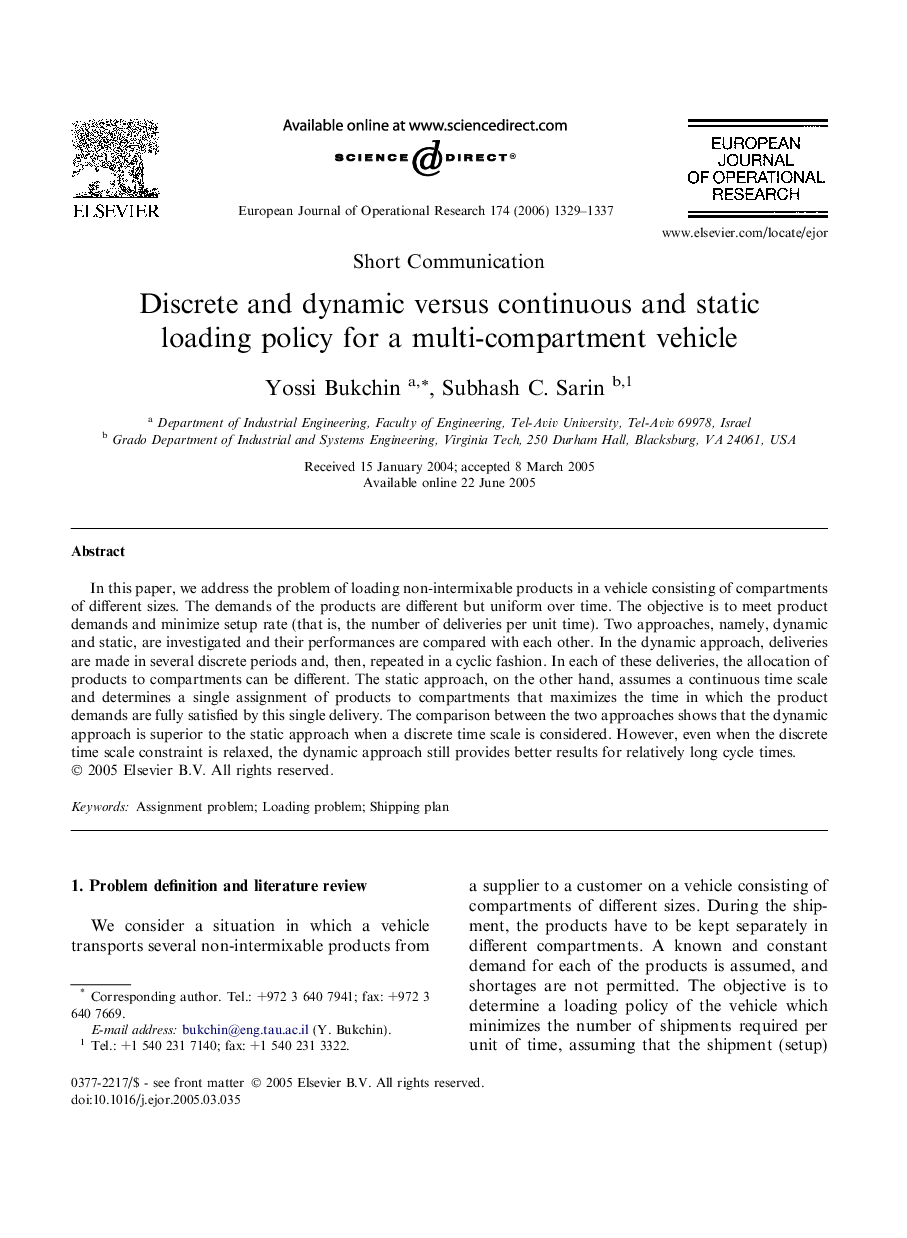| Article ID | Journal | Published Year | Pages | File Type |
|---|---|---|---|---|
| 482493 | European Journal of Operational Research | 2006 | 9 Pages |
In this paper, we address the problem of loading non-intermixable products in a vehicle consisting of compartments of different sizes. The demands of the products are different but uniform over time. The objective is to meet product demands and minimize setup rate (that is, the number of deliveries per unit time). Two approaches, namely, dynamic and static, are investigated and their performances are compared with each other. In the dynamic approach, deliveries are made in several discrete periods and, then, repeated in a cyclic fashion. In each of these deliveries, the allocation of products to compartments can be different. The static approach, on the other hand, assumes a continuous time scale and determines a single assignment of products to compartments that maximizes the time in which the product demands are fully satisfied by this single delivery. The comparison between the two approaches shows that the dynamic approach is superior to the static approach when a discrete time scale is considered. However, even when the discrete time scale constraint is relaxed, the dynamic approach still provides better results for relatively long cycle times.
